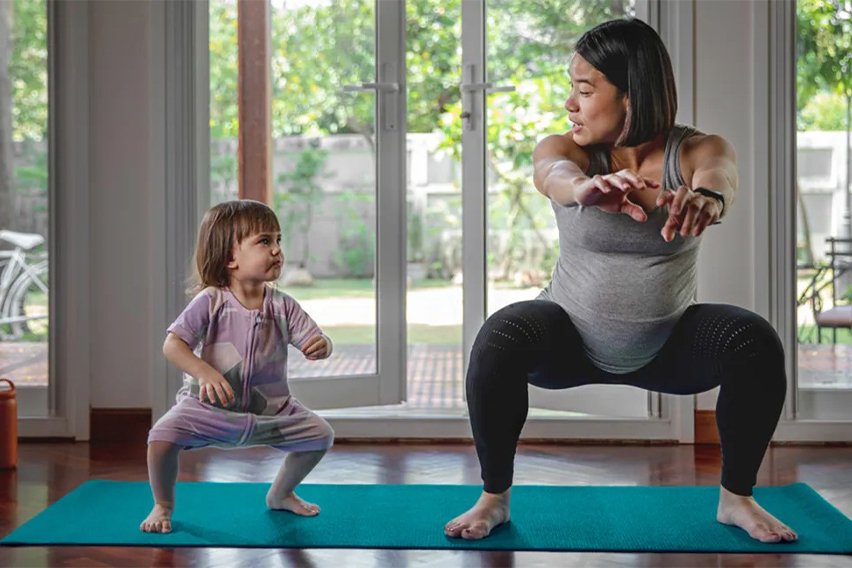
Pregnancy is an exciting time for many women, but it can also be a time of concern when it comes to exercising. While physical activity is important for maintaining a healthy pregnancy, it’s important to exercise safely and avoid any activities that could potentially harm the developing fetus or the mother.
Here are some tips for exercising safely during pregnancy:
Before starting any exercise program, it’s important to consult with your healthcare provider to make sure that it’s safe for you and your baby. Your healthcare provider can give you specific guidelines based on your medical history, fitness level, and the stage of your pregnancy.

High-impact activities, such as running or jumping, can put too much stress on your joints and pelvic floor muscles, which can lead to injury or discomfort. Low-impact exercises, such as walking, swimming, or prenatal yoga, are safer options for pregnant women.
Activities that involve a risk of falling, such as skiing or horseback riding, should be avoided during pregnancy. Falls can cause serious injury to the mother and the fetus.
Staying hydrated is important during pregnancy, especially when exercising. Drink plenty of water before, during, and after exercise to prevent dehydration.
It’s important to listen to your body during exercise and avoid pushing yourself too hard. Pregnancy hormones can make your joints more flexible, which can increase your risk of injury. If you feel pain or discomfort during exercise, stop and rest.
As your pregnancy progresses, your body will change, and you may need to modify your exercise routine. As your belly grows, you may need to avoid exercises that require lying on your back or twisting your torso. Your healthcare provider can provide guidance on modifications as your pregnancy progresses.

Comfortable, supportive clothing and footwear are important during pregnancy, especially when exercising. Choose clothing that allows for freedom of movement and supports your growing belly. Wear supportive footwear to prevent falls and protect your feet and ankles.
Pregnant women are more sensitive to heat and humidity, and exercising in these conditions can increase the risk of dehydration and overheating. Avoid exercising outdoors during the hottest part of the day and choose an air-conditioned gym or exercise at home if possible.
Holding your breath during exercise can increase your blood pressure and reduce oxygen flow to your baby. Instead, focus on breathing deeply and evenly during exercise.
The pelvic floor muscles can weaken during pregnancy, leading to urinary incontinence and other issues. Practicing pelvic floor exercises, such as Kegels, can help strengthen these muscles and reduce the risk of complications during and after pregnancy.
As your belly grows, your center of gravity shifts, which can affect your balance. Be mindful of your balance during exercise and avoid exercises that require sudden movements or changes in direction.
Pregnancy can be exhausting, and it’s important to listen to your body and take breaks when needed. If you feel tired or fatigued during exercise, take a break and rest. Remember, exercising during pregnancy is not about pushing yourself to the limit but about maintaining a healthy level of physical activity for you and your baby.
While exercising during pregnancy is generally safe, it’s important to stay aware of any warning signs that something may be wrong. If you experience any of the following symptoms during exercise, stop and contact your healthcare provider:
Regular exercise during pregnancy can help improve your mood, reduce stress, and promote better sleep. Try to exercise on a regular basis, even if it’s just a short walk or prenatal yoga session.
Joining a prenatal exercise class can be a great way to stay motivated and meet other pregnant women. Look for classes that are specifically designed for pregnant women and led by a certified prenatal fitness instructor.